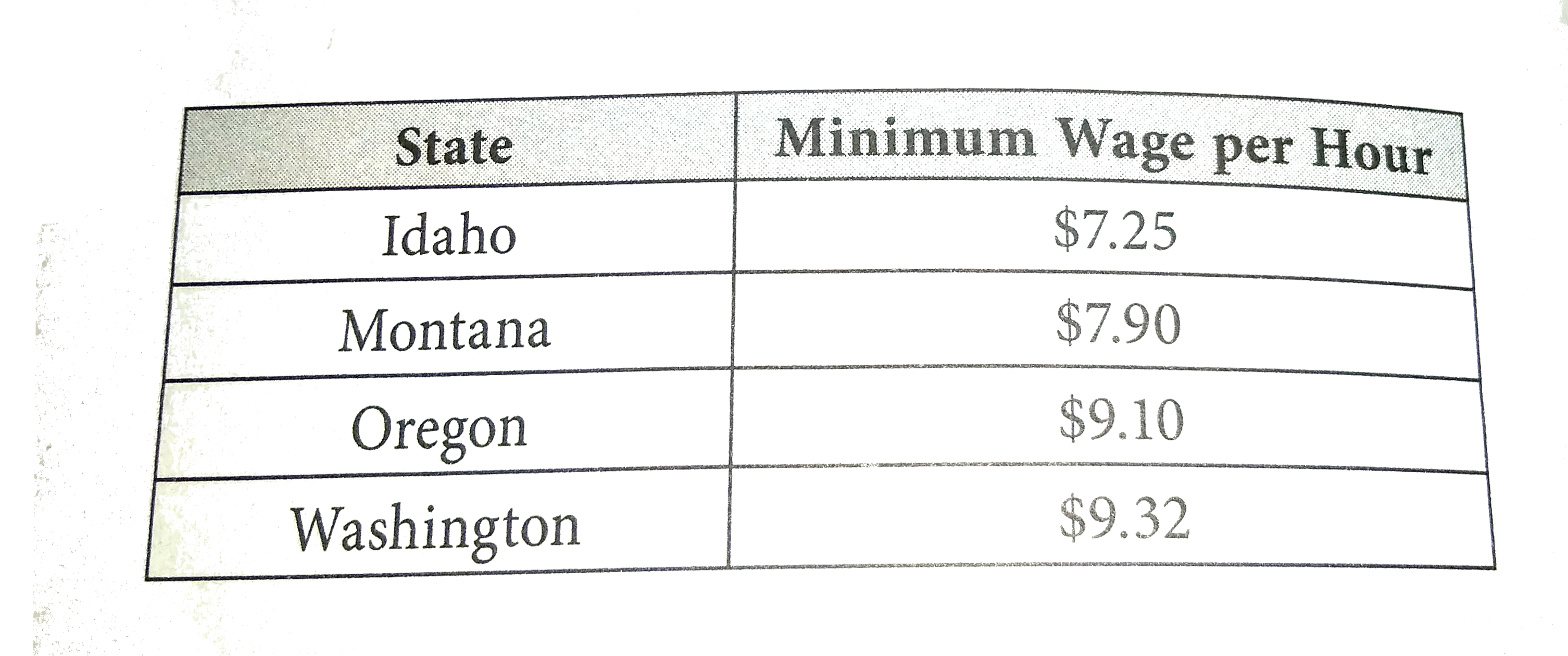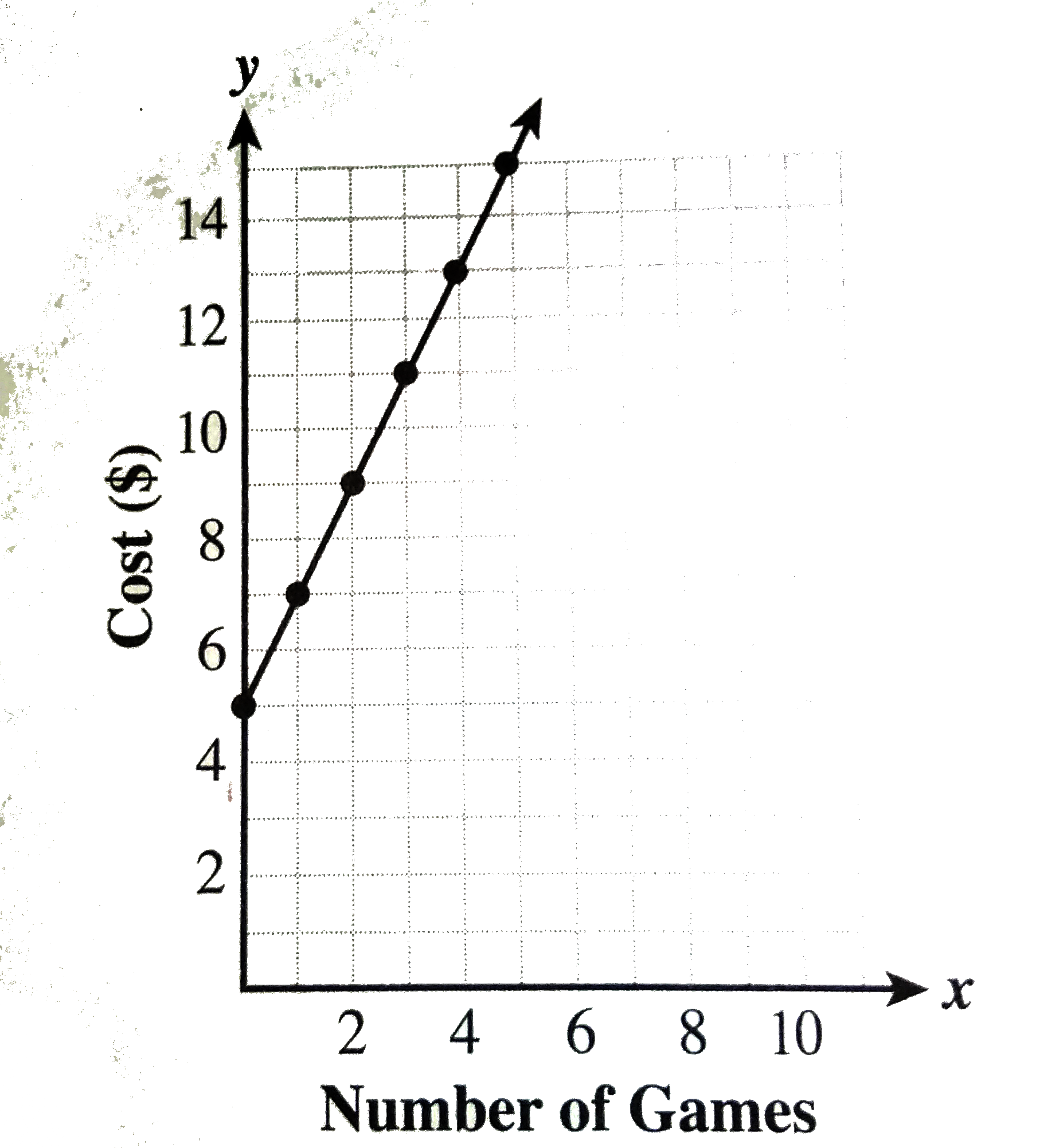
The table above shows the 2014 minimm wages for several states that share a border. Assuming an average workweek of between 35 and 40 hours, which inequality represents how much more a worker who earns minimum wage can earn per week in Oregon than in Idaho?
The correct Answer is:C
Step by step video & image solution for The table above shows the 2014 minimm wages for several states that share a border. Assuming an average workweek of between 35 and 40 hours, which inequality represents how much more a worker who earns minimum wage can earn per week in Oregon than in Idaho? by Maths experts to help you in doubts & scoring excellent marks in Class 10 exams.
Updated on:21/07/2023Topper's Solved these Questions
Similar Questions
The angles of trinalge are in the ratio 2:3:4. What is the degree measures of the largest angle?
View Solution
The graph above shows the amount that a new, high-tech video arcade charges its customers What could the y-intercept of this graph represent?
View SolutionHow many lines of symmetry does the above figure have ?
View SolutionWhich of the following are correct chain isomers of butane ? (i)
View SolutionDetermine the point of symmetry of a regular hexagon.
View SolutionDtermine the images of the following figure about the given line :
View SolutionMatch the following Column A to Column B

View SolutionMatch the following Column A to Column B

View SolutionMatch the following Column A to Column B

View SolutionFind the area of the figure given below.

View SolutionThe area of the shaded part in the figure given below is ______.

View SolutionThe inequation represented by the graph given below is :
View SolutionThe inequation that best describes the graph given below is _________
View SolutionThe inequation that best describes the following graph is _________
View SolutionWhich inequations represent the shaded region in the given figure
View SolutionIn Fig, find the value of x.
ltimg src="https://d10lpgp6xz60nq.cloudfront.net/physics_images/PS_MATH_IX_C12_S01_032_Q01.png" width="80%"gt
View Solution
